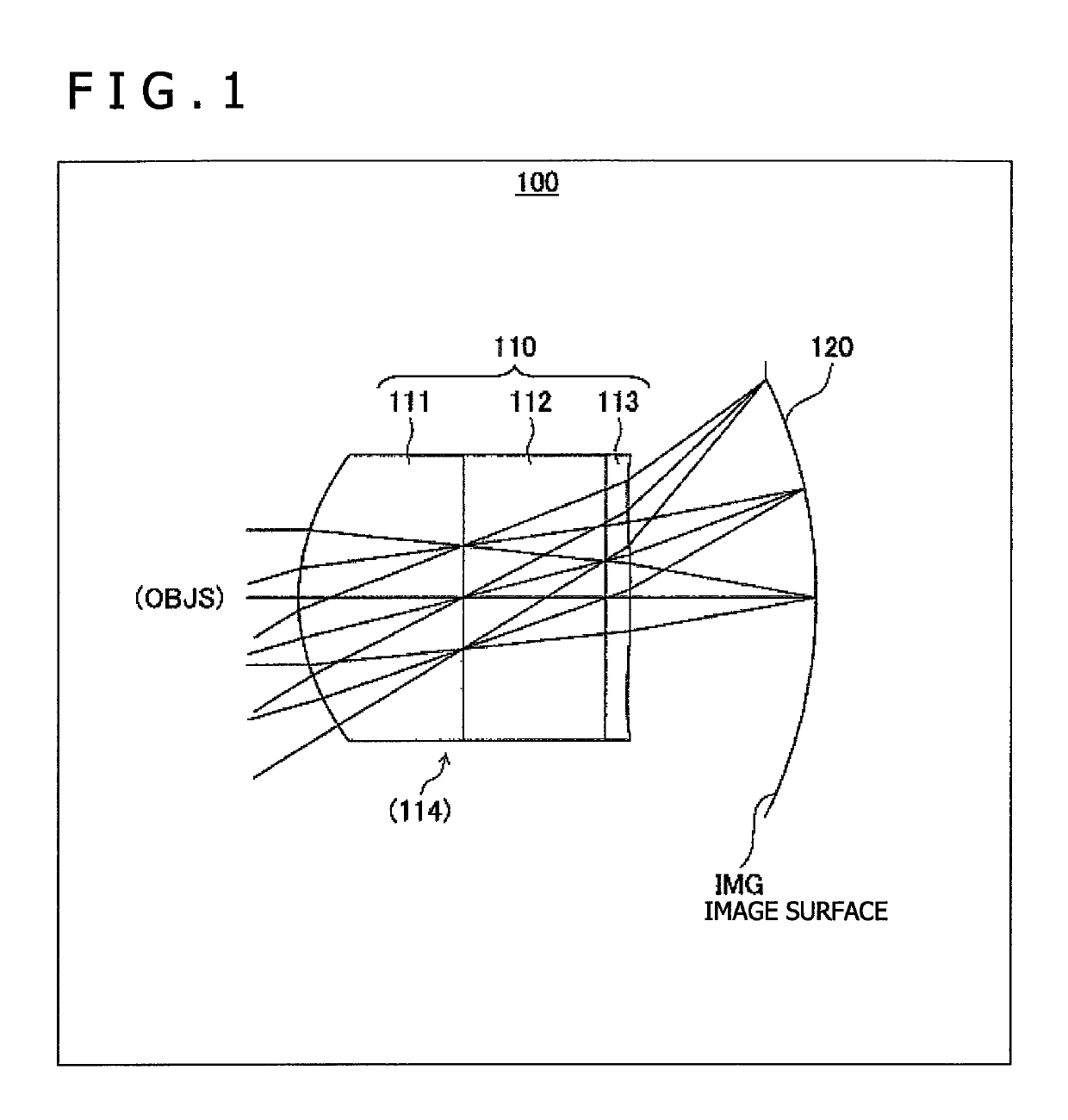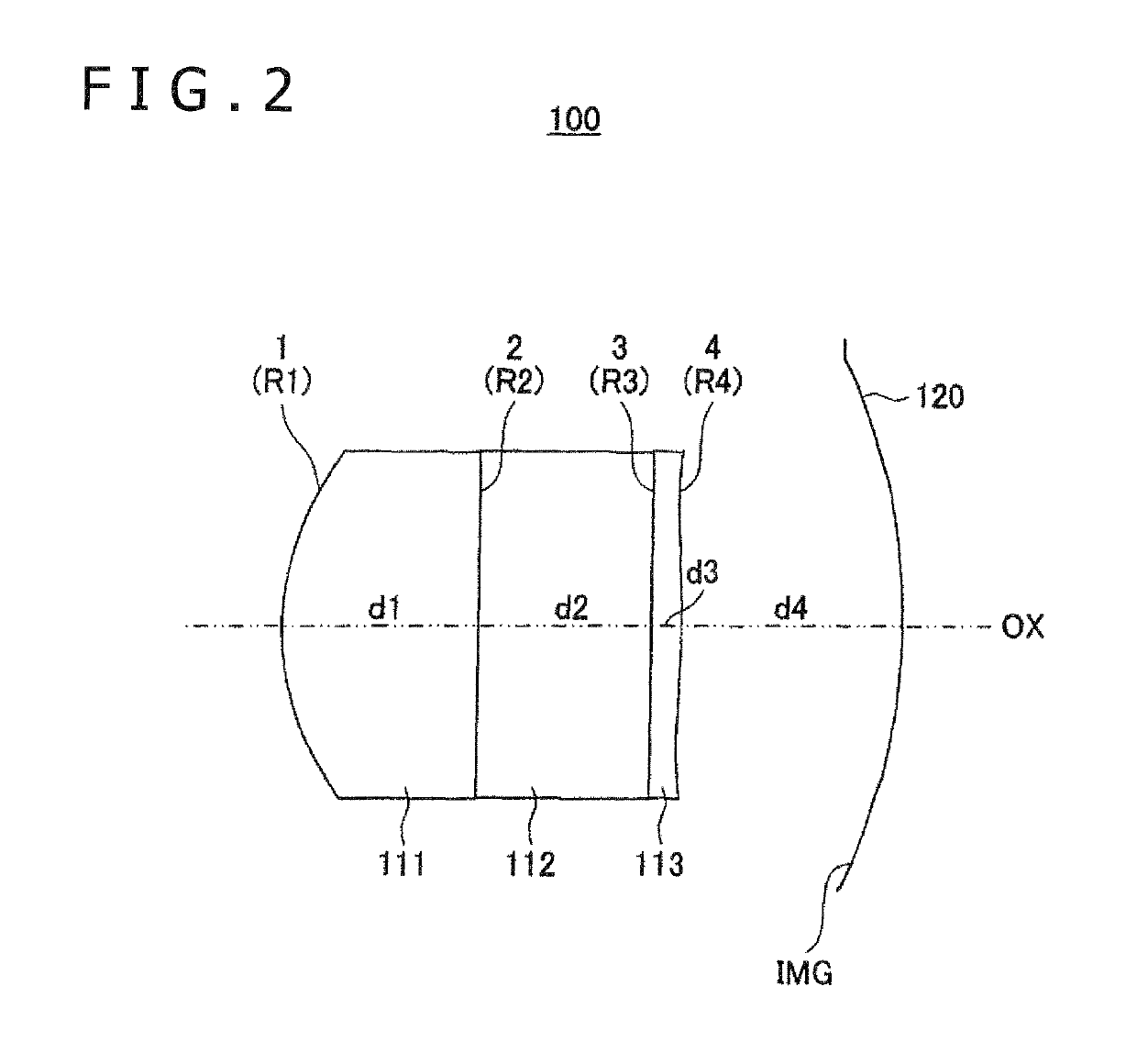Imaging device and electronic apparatus
a technology of electronic equipment and a camera, which is applied in the field of imaging devices, can solve the problems of high assembly accuracy, unmanufacturability of lenses, and increased number of lenses, and achieve the effects of high resolution, small size, and high pixel coun
- Summary
- Abstract
- Description
- Claims
- Application Information
AI Technical Summary
Benefits of technology
Problems solved by technology
Method used
Image
Examples
first embodiment
1. First Embodiment
[0064]FIG. 1 is a diagram showing an example of configuration of an imaging device according to a present first embodiment.
[0065]As shown in FIG. 1, the imaging device 100 according to the present first embodiment includes a lens 110 and an imaging element 120 arranged in order from an object side OBJS to an image surface side.
[0066]This lens 110 is formed as a single focus lens.
[0067]The present imaging device 100 basically includes the imaging element 120 curved so as to have a concave surface facing the object side and one group of lenses 110.
[0068]The lenses 110 include a first lens 111 whose object side surface has a convex shape projecting to the object side, a glass substrate 112 as a transparent body provided with a diaphragm and an infrared cutoff filter, and a second lens 113, with the first lens 111, the glass substrate 112, and the second lens 113 arranged in order from the object side to the image surface side without an air being interposed therebetw...
first example
[0107]The numerical values of the first example are shown in Table 1, Table 2, Table 3, and Table 4. The numerical values of the first example correspond to the lens 110 of FIG. 1.
[0108]The first example is a design example for a 3-megapixel (Mega pixel) CMOS imager having a ⅙ size and a 1.1-μm pitch.
[0109]As described above, the present first example includes the imaging element 120 curved so as to have a concave surface facing the object side and one group of lenses 110.
[0110]The lenses 110 include the first lens 111 whose object side surface has a convex shape projecting to the object side, the glass substrate 112 provided with a diaphragm and an infrared cutoff filter, and the second lens 113, with the first lens 111, the glass substrate 112, and the second lens 113 arranged in order from the object side to the image surface side without an air being interposed therebetween.
[0111]The first lens 111 is desirably realized by providing an ultraviolet (UV) curing replica lens on the...
second embodiment
2. Second Embodiment
[0130]FIG. 5 is a diagram showing an example of configuration of an imaging device according to a present second embodiment.
[0131]The imaging device 100A according to the second embodiment shown in FIG. 5 and the imaging device 100 according to the first embodiment shown in FIG. 1 are different from each other in the following respect.
[0132]In the imaging device 100A, a first lens 111A is formed by a first lens element 1111 and a second lens element 1112, and a glass substrate 112A is formed by a first glass substrate 1121 and a second glass substrate 1122. In the second embodiment, the first lens 111A is formed on the first glass substrate 1121, and a second lens 113A is formed on the second glass substrate 1122.
[0133]FIG. 6 is a diagram showing surface numbers given to the lenses and the substrate of the imaging device according to the present second embodiment.
[0134]Specifically, a surface number of number one is given to the object side surface (convex surfac...
PUM
 Login to View More
Login to View More Abstract
Description
Claims
Application Information
 Login to View More
Login to View More - R&D
- Intellectual Property
- Life Sciences
- Materials
- Tech Scout
- Unparalleled Data Quality
- Higher Quality Content
- 60% Fewer Hallucinations
Browse by: Latest US Patents, China's latest patents, Technical Efficacy Thesaurus, Application Domain, Technology Topic, Popular Technical Reports.
© 2025 PatSnap. All rights reserved.Legal|Privacy policy|Modern Slavery Act Transparency Statement|Sitemap|About US| Contact US: help@patsnap.com



